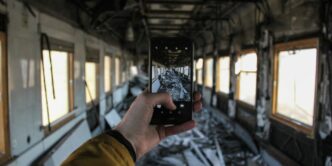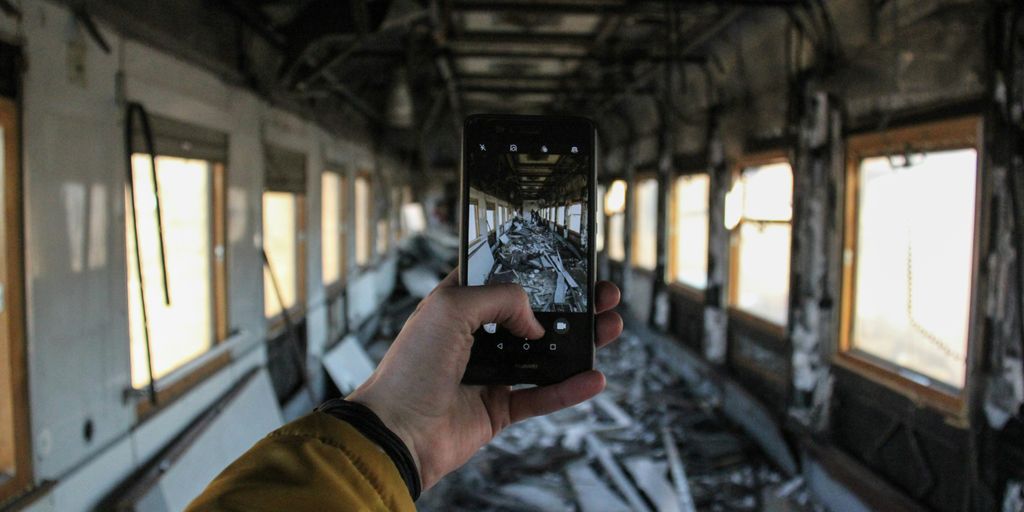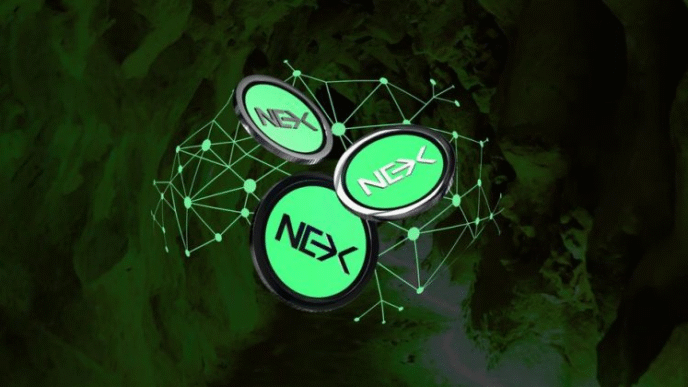We all love a good story, especially when things go wrong, as long as it’s not happening to us. When it comes to technology, failures, even really big ones, can actually teach us more than huge successes. This article looks at some examples of technological disasters from over 300 years. It shows that even though technology changes, the reasons for things going wrong stay pretty much the same. Think about clients who rush things, lazy designers cutting corners, or just too much confidence in new tech. These stories remind us how easily trusted systems can mess up, and how small, seemingly obvious problems can lead to big trouble.
Key Takeaways
- Even well-established systems can have hidden flaws.
- Human choices, like rushing or overconfidence, often play a big part in tech failures.
- The way different parts of a system interact can create unexpected problems.
- Learning from past mistakes helps prevent future issues.
- Simple design errors can lead to major disasters.
Early Naval Engineering Failures

The Vasa’s Maiden Voyage Disaster
The story of the Vasa is a classic example of ambition outpacing engineering know-how. King Gustavus Adolphus II of Sweden wanted to build a powerful navy, and he wanted it fast. He pushed for the construction of the Vasa, a warship intended to be the most impressive of its time. However, the king’s constant changes to the design, including adding a second gun deck, made the ship unstable.
Here’s a quick rundown of what went wrong:
- The king kept changing the design.
- The master shipwright died during construction.
- No one dared to tell the king the ship was unstable.
The Vasa capsized and sank in Stockholm harbor on its maiden voyage in 1628, a short distance from shore. It was a huge embarrassment and a tragic loss of life. The Vasa sinking serves as a reminder that even the most impressive technology can fail if the fundamentals of engineering are ignored.
Lessons From 17th-Century Ship Design
The Vasa disaster wasn’t just a fluke; it highlighted some key challenges in 17th-century ship design. Shipbuilders were still figuring out the relationship between a ship’s dimensions, its center of gravity, and its stability. They didn’t have the sophisticated tools and calculations we have today. A big problem was the lack of standardized testing. The stability test they used – having sailors run from side to side – was clearly inadequate. The evolution of fire suppression is similar to the evolution of ship design, in that both have improved over time.
Here are some lessons we can learn:
- Don’t let ambition override sound engineering principles.
- Thorough testing is essential.
- Listen to your engineers, even if they have bad news.
The Vasa‘s story is a cautionary tale that continues to resonate today. It reminds us that even with the most advanced technology, a lack of understanding and a disregard for basic principles can lead to disaster.
Infrastructure Vulnerabilities

Infrastructure, the backbone of modern society, is surprisingly fragile. We often take for granted the systems that provide us with power, transportation, and essential services. However, history is filled with examples of infrastructure failures that have led to devastating consequences. These failures highlight the importance of robust design, careful construction, and ongoing maintenance.
The Hyatt Regency Walkway Collapse
One of the most tragic examples of structural failure is the Hyatt Regency walkway collapse in Kansas City in 1981. A design flaw, combined with a last-minute change during construction, resulted in the collapse of two suspended walkways during a tea dance. This disaster resulted in 114 deaths and over 200 injuries. The original design specified a system where the upper walkway was supported by rods running all the way to the ceiling. However, the fabricator changed the design, resulting in the upper walkway hanging from the lower one, effectively doubling the load on the connections. This change was not properly reviewed or approved, leading to catastrophic failure. The Hyatt Regency collapse serves as a stark reminder of the importance of clear communication, thorough review, and adherence to sound engineering principles. It also underscores the potential consequences of cutting corners or making unauthorized changes during construction. This event led to significant changes in engineering ethics and practices.
Cascading Failures in Power Grids
Power grids are complex, interconnected systems that are vulnerable to cascading failures. A single point of failure, such as a downed power line or a malfunctioning transformer, can trigger a chain reaction that leads to widespread blackouts. The Northeast Blackout of 2003, which affected over 50 million people in the United States and Canada, is a prime example. The initial cause was a software glitch at a power plant in Ohio, but a lack of situational awareness and inadequate communication among grid operators allowed the problem to escalate. The blackout disrupted transportation, communication, and essential services, highlighting the vulnerability of modern society to power grid failures. The urban disaster management strategies need to be in place to handle such events. To prevent future blackouts, power grid operators are investing in improved monitoring systems, enhanced communication protocols, and more robust infrastructure. They are also exploring the use of distributed generation and microgrids to increase the resilience of the power grid.
Levee Breaches During Natural Disasters
Levees are designed to protect communities from flooding, but they are not always reliable. Levee breaches during natural disasters can have devastating consequences, as demonstrated by Hurricane Katrina in 2005. The failure of the levees in New Orleans led to widespread flooding, displacement, and loss of life. The levees were poorly designed and constructed, and they were not adequately maintained. The storm surge from Hurricane Katrina overwhelmed the levees, causing them to breach in multiple locations. The flooding inundated approximately 80% of the city, causing billions of dollars in damage. The disaster exposed the vulnerability of coastal communities to flooding and the importance of investing in robust flood control infrastructure. Since Hurricane Katrina, significant investments have been made in improving the levee system in New Orleans. However, many other communities around the world remain vulnerable to levee breaches and flooding. Here’s a quick look at the impact:
- Massive flooding of New Orleans.
- Displacement of hundreds of thousands of residents.
- Billions of dollars in property damage.
- Significant loss of life.
Software and Network Catastrophes
It’s easy to forget how much we rely on software and networks until they fail. And when they do, the consequences can be widespread and pretty disruptive. These failures often highlight the complex interactions within these systems and the potential for a single error to cause major problems.
The AT&T Network Crash of 1990
Back in the day, AT&T was the phone company, known for its reliable network. Then, in January 1990, it all went haywire. A minor glitch in one switching center triggered a cascade of failures across the entire network. The problem? A single line of faulty code in a recent software upgrade. It was like a domino effect, with each center crashing and sending out signals that brought down others. American Airlines lost a ton of reservation calls, and even CBS couldn’t reach its local bureaus. The AT&T network crash showed that even the most robust systems are vulnerable to software errors, especially when redundancy isn’t properly isolated.
Unforeseen Software Interactions
Software is complex, and different programs often interact in ways that developers don’t anticipate. These interactions can lead to unexpected bugs and system failures. It’s like building with Lego bricks – sometimes, two pieces that seem like they should fit together perfectly end up causing the whole structure to collapse. Debugging these issues can be a real headache, as it requires understanding the intricate relationships between different software components. It’s a reminder that thorough testing and careful design are super important to prevent these kinds of problems. Here are some common causes of unforeseen software interactions:
- Incompatible libraries
- Race conditions in multithreaded applications
- Memory leaks due to improper resource management
The Y2K Bug: Averted But Instructive
The Y2K bug was a classic example of a potential software disaster that, thankfully, was mostly averted. The issue stemmed from the practice of using only two digits to represent the year in computer systems. The fear was that when the year 2000 hit, computers would interpret ’00’ as 1900, leading to widespread chaos. While the worst-case scenarios didn’t materialize, the Y2K scare was a wake-up call. It forced organizations to examine their systems and fix potential problems. The Y2K bug taught us the importance of planning for the future and addressing potential software vulnerabilities before they cause major disruptions. It also showed how much effort it takes to fix a problem that is known ahead of time. Here’s a quick rundown of the Y2K prep:
| Action | Description |
|---|---|
| System Audits | Identifying systems at risk |
| Code Remediation | Updating software to handle the year 2000 correctly |
| Contingency Planning | Developing backup plans in case of system failures |
| Public Awareness Campaigns | Informing the public about the issue and the steps being taken to address it |
The Human Element in Technological Disasters
It’s easy to blame technology when things go wrong, but often, the root cause lies with us. Human decisions, biases, and limitations play a huge role in turning potential risks into full-blown disasters. It’s not just about faulty code or weak materials; it’s about the people who design, build, and manage these systems. We’re talking about the choices that lead to cutting corners, ignoring warning signs, and prioritizing speed over safety. Understanding these human factors is key to preventing future catastrophes.
Hubris and Overconfidence in Design
Sometimes, designers get a little too confident. They might think they’ve seen it all, or that their new design is so revolutionary it’s immune to problems. This can lead to ignoring established safety protocols or underestimating potential risks. It’s like that feeling when you’re sure you know the shortcut, even though everyone else takes the long way. And then you end up completely lost. A little humility and a healthy dose of skepticism can go a long way. For example, aviation security failures can often be traced back to overconfidence in existing systems.
Cutting Corners in Construction
We’ve all heard stories about projects where costs were cut, and quality suffered. Maybe it’s using cheaper materials, skipping inspections, or rushing the construction process. These decisions might save money in the short term, but they can have devastating consequences down the road. It’s like building a house on a shaky foundation – it might look good at first, but it won’t stand the test of time. It’s tempting to save a buck, but sometimes, you really do get what you pay for.
Impatient Clients and Project Pressures
Deadlines, budgets, and demanding clients can create immense pressure on project teams. This pressure can lead to rushed decisions, inadequate testing, and a willingness to overlook potential problems. It’s like trying to bake a cake in half the time – you might end up with something that looks like a cake, but it probably won’t taste very good. Sometimes, you need to push back and say, "This needs more time," even if it’s not what the client wants to hear. After all, a delayed project is better than a disastrous one.
Interconnectedness of Systems
Technology’s Role in Defining Natural Disasters
It’s easy to think of technology as separate from nature, but that’s not really how it works. Technological failures can actually shape our understanding of what even is a natural disaster. Think about it: a hurricane hits a city with a poorly maintained levee system. Is that just a natural disaster, or is it also a failure of engineering and infrastructure? The answer is both. Our reliance on things like power grids means that when they fail, natural events become something much worse – a cascading crisis of darkness, isolation, and disrupted services. It shows how technology’s dual nature is always at play.
The Ripple Effect of Component Failures
One small thing goes wrong, and suddenly everything is breaking down. That’s the ripple effect in action. It’s not just about one part failing; it’s about how that failure triggers a chain reaction across the whole system. This is especially true in complex systems like power grids or even software networks. A seemingly minor glitch in one area can quickly snowball into a major outage affecting thousands of people. It’s like a house of cards – pull one out, and the whole thing collapses. We saw this with the Northeast blackout of 1965, where efforts to prevent shortages actually led to a massive failure because engineers didn’t fully grasp how the interconnected grid would behave under stress. It’s a reminder that even well-intentioned solutions can have unforeseen consequences when systems become too complex.
Learning From Past Mistakes
Analyzing Historical Examples of Technological Disasters
It’s easy to get caught up in the excitement of new tech, but history is full of examples where things went horribly wrong. Looking back at these failures gives us a chance to understand what went wrong and why. We can see patterns emerge – like overconfidence, cutting corners, or just plain bad design. By studying these past events, we can identify potential pitfalls and develop strategies to avoid them in the future. Think of it as learning from someone else’s expensive mistakes, so you don’t have to repeat them. For example, examining the data disasters of the past can inform better disaster recovery plans today.
Preventing Future Catastrophes Through Design
Good design isn’t just about making something look cool; it’s about making it safe and reliable. This means considering all the possible ways a system could fail and building in safeguards to prevent those failures. It also means being willing to say "no" to features that are too risky or complex. A key part of this is redundancy – having backup systems in place in case the primary system fails. It’s like having a spare tire in your car; you hope you never need it, but you’re glad it’s there if you do. Here are some key considerations for robust design:
- Simplicity: Avoid unnecessary complexity. Simpler systems are easier to understand and maintain.
- Redundancy: Build in backup systems to handle failures.
- Testing: Rigorously test all components and systems under various conditions.
The Importance of Robust Testing
Testing is absolutely critical. You can’t just assume that something will work as expected; you have to put it through its paces and see how it performs under stress. This includes not only testing individual components but also testing the entire system as a whole. It’s like stress-testing a bridge before opening it to traffic. If you find weaknesses, you can address them before they cause a real problem. Robust testing is the best way to catch design flaws and prevent future catastrophes. Here’s a simple table illustrating the importance of testing phases:
| Testing Phase | Purpose | Potential Outcome of Skipping |
|---|---|---|
| Unit Testing | Verify individual components work | Integration issues |
| Integration | Ensure components work together | System failures |
| System Testing | Validate the entire system’s functionality | Unexpected behavior |
| User Acceptance | Confirm the system meets user needs | Dissatisfaction, rework |
Conclusion
So, what’s the big takeaway from all these stories? It’s pretty clear: even with all our smarts and cool gadgets, things can still go sideways. Sometimes it’s because someone rushed a project, or maybe they just got a little too confident. Other times, it’s a tiny mistake that nobody saw coming, and then boom, everything falls apart. These examples, from old ships to modern software, show us that while technology changes, the reasons for its failures often stay the same. It’s a good reminder that we need to be careful, think things through, and not get ahead of ourselves when we’re building the next big thing. Learning from these past problems can help us avoid making the same mistakes again. Hopefully.
Frequently Asked Questions
Why is it important to study old technological disasters?
Looking back at past mistakes helps us learn how to make technology safer. It shows us common problems, like rushing projects or cutting corners, so we can avoid them in the future. It’s like learning from someone else’s errors instead of making them ourselves.
What are some common reasons why technology fails in big ways?
Many things can go wrong. Sometimes, people are too confident in new inventions, or they try to save money by using cheaper materials. Other times, clients push for things to be done too quickly, which can lead to mistakes. Even small errors in design or a tiny computer bug can cause huge problems.
Can we ever truly prevent all technological disasters?
Even though we learn from past events, new technologies bring new risks. As things become more connected, a problem in one area can quickly spread to many others. We need to keep improving how we design, test, and manage these systems to stay safe.
Have there been times when a big technological disaster was avoided?
Yes, definitely! The Y2K bug is a great example. Many people worked hard to fix computer systems before the year 2000, and because of their efforts, the predicted widespread failures didn’t happen. This shows that careful planning and hard work can prevent problems.
How do natural disasters and technology failures connect?
It’s tricky, but often, natural disasters become worse because of how our technology is built. For example, if a hurricane hits a city, the damage is much greater if the power grid isn’t strong enough or if flood walls fail. So, our technology can make natural events more destructive.
What steps can be taken to make new technologies safer?
We can make sure our designs are strong and well-thought-out, test everything very carefully, and not rush projects. It’s also important to have good communication and for everyone involved to be honest about any potential problems, even if they seem small.














